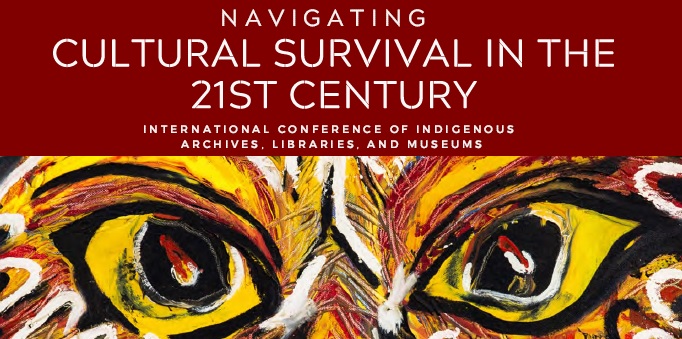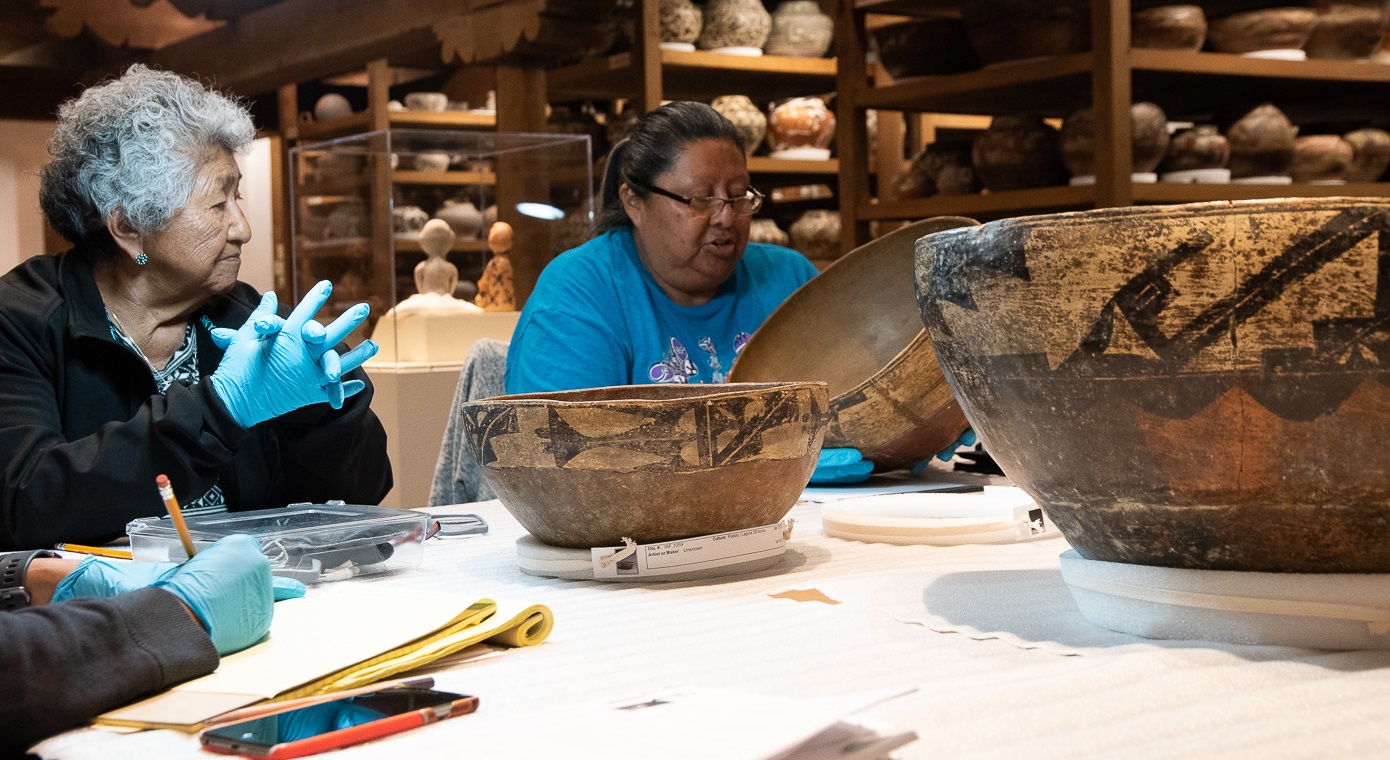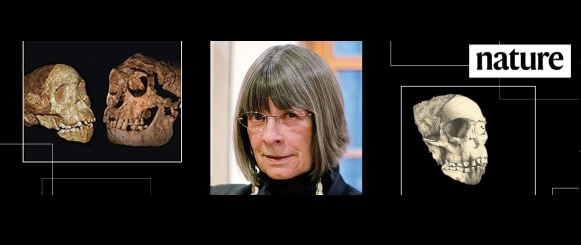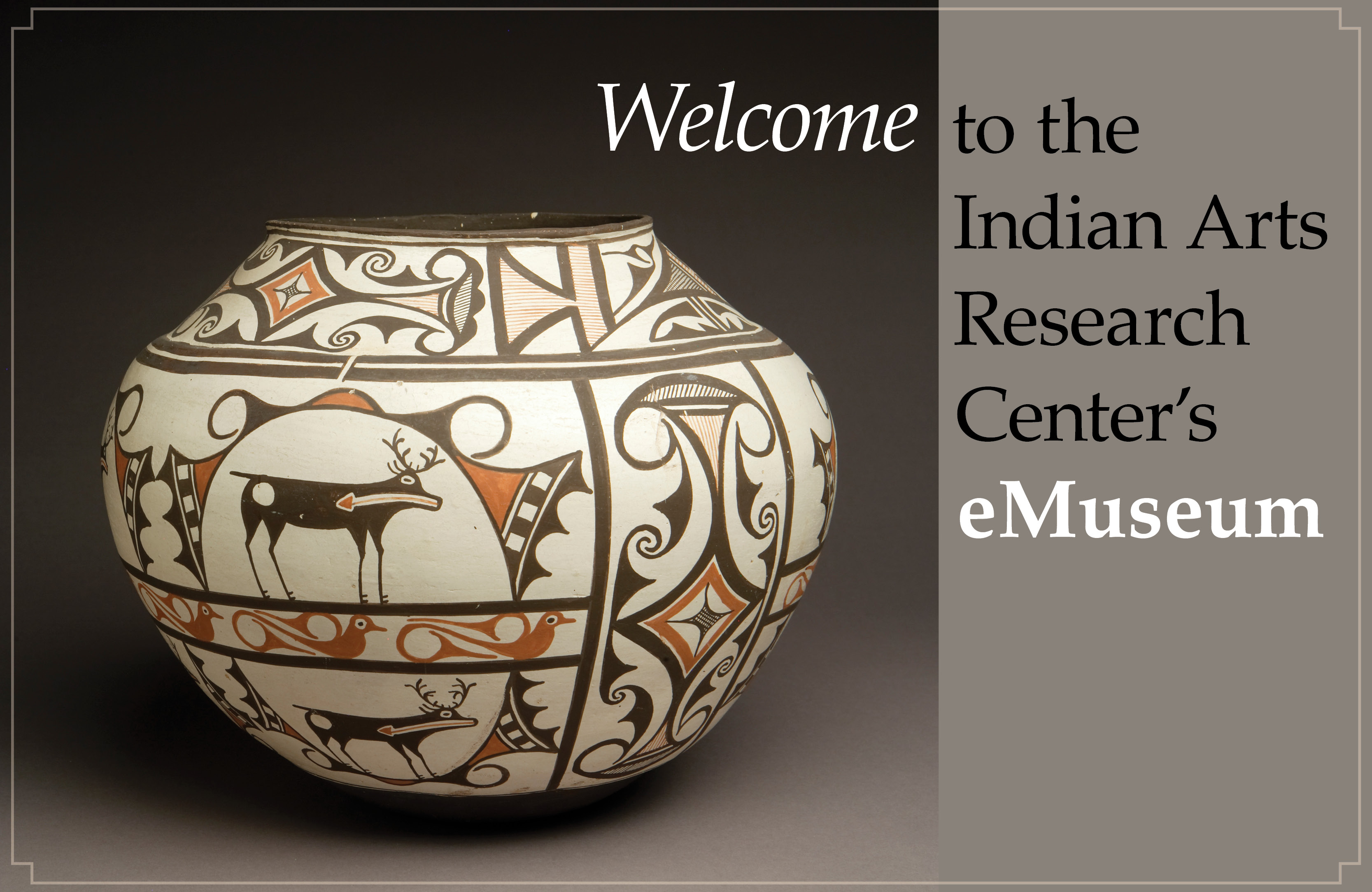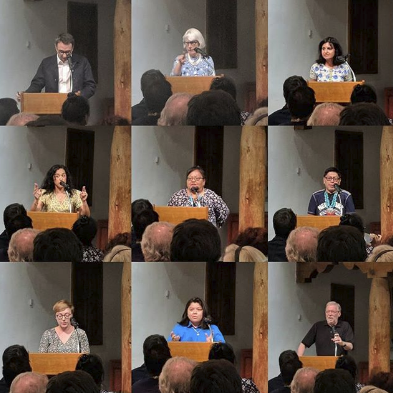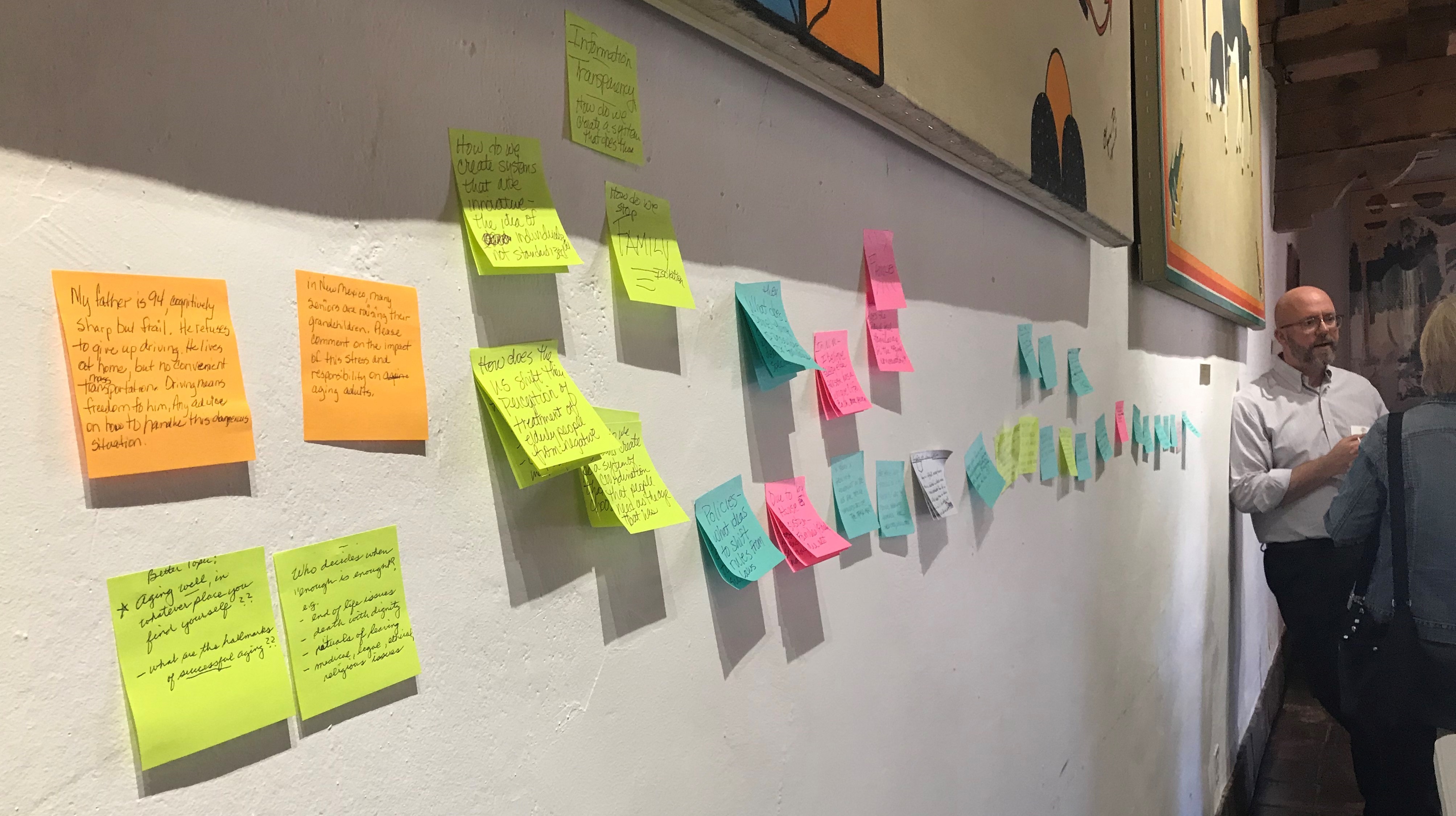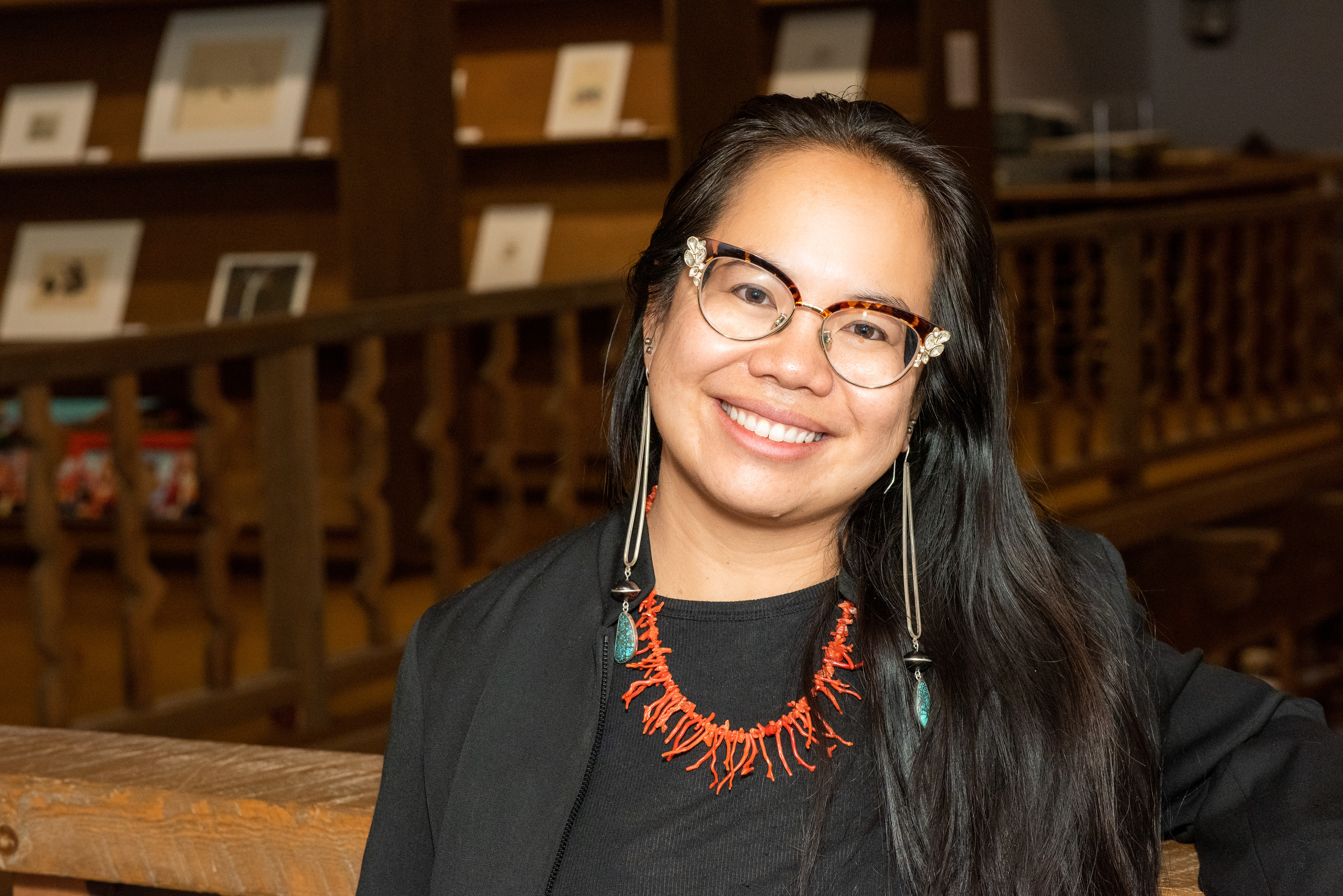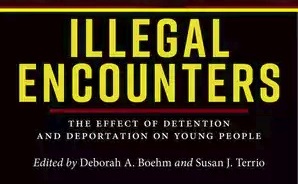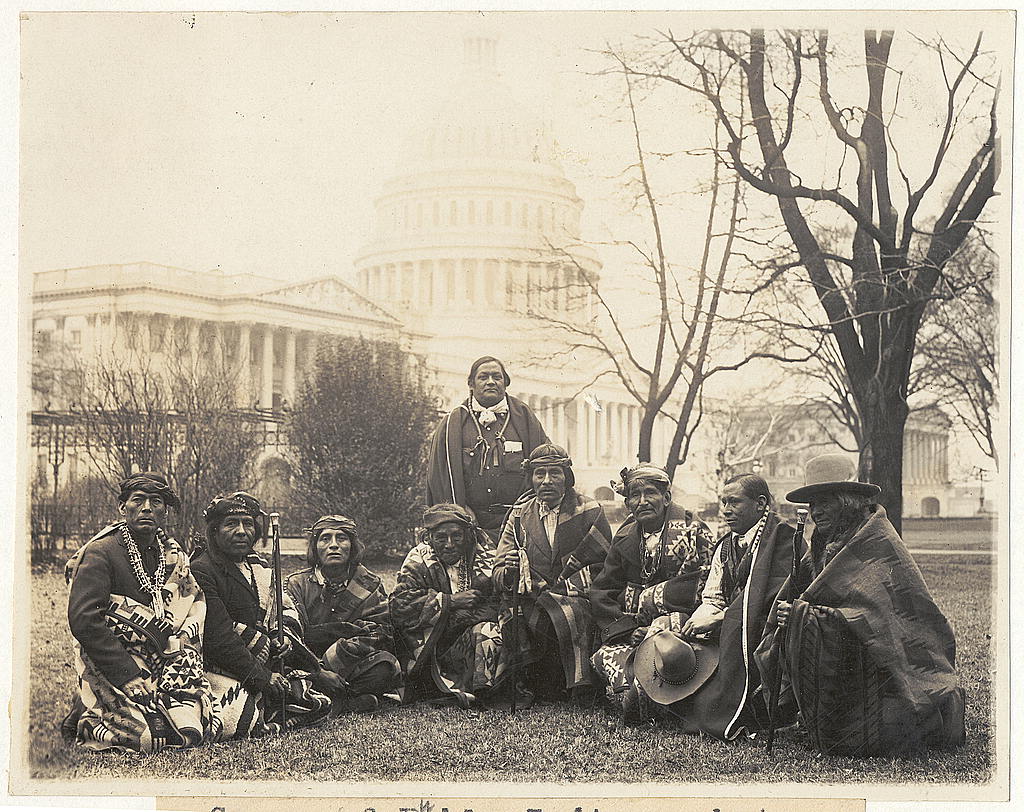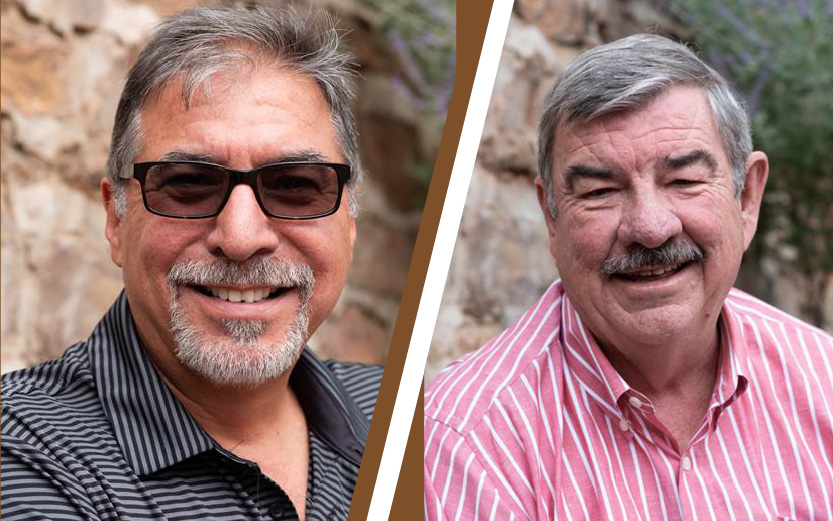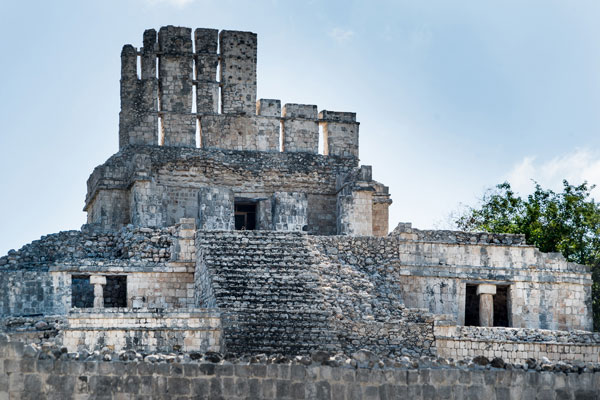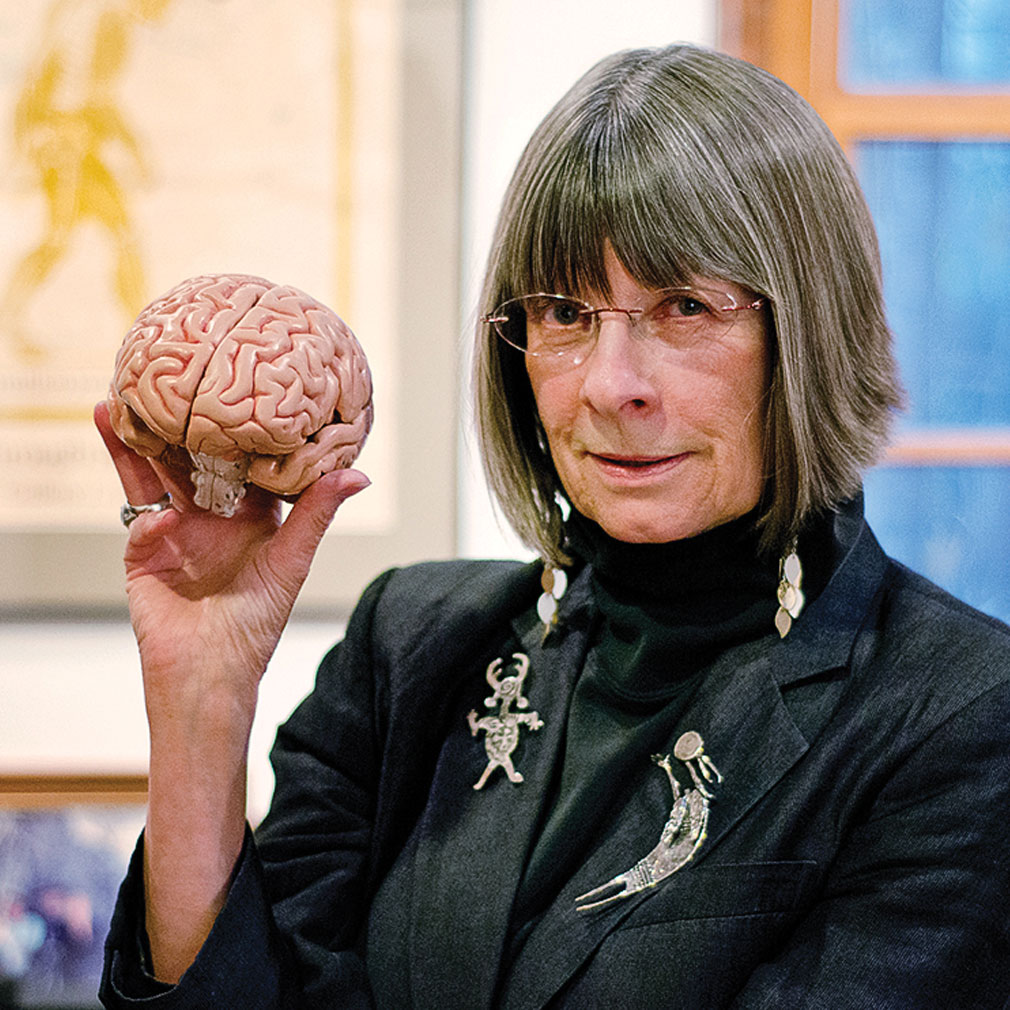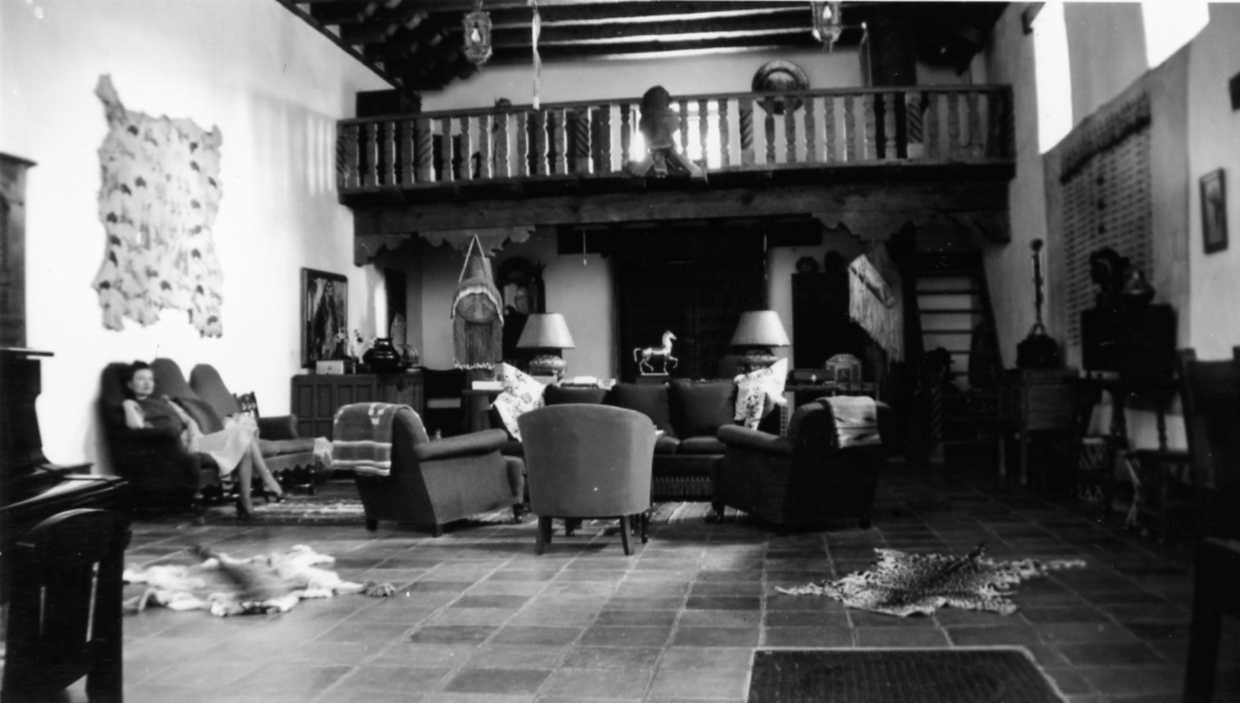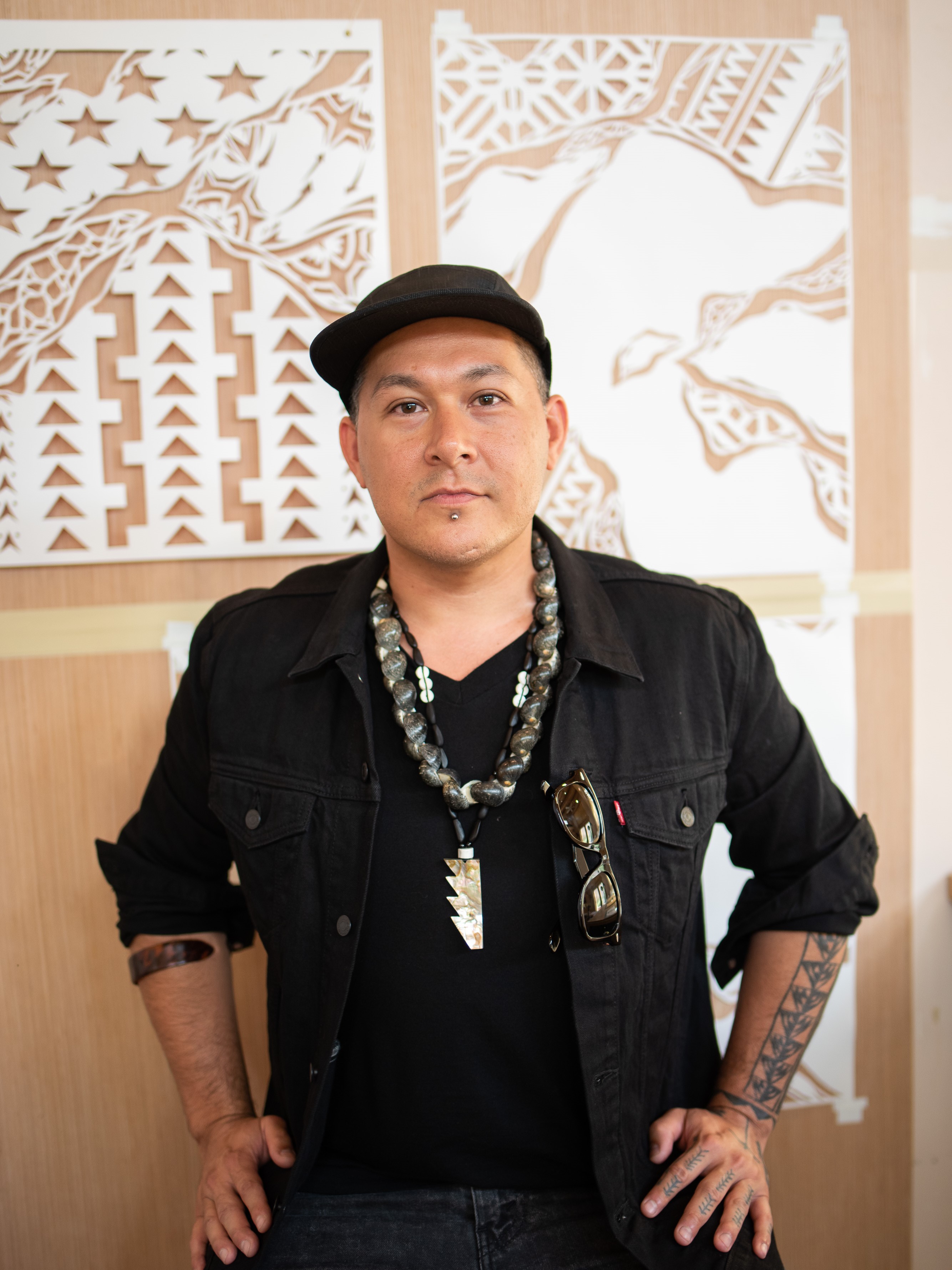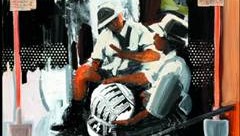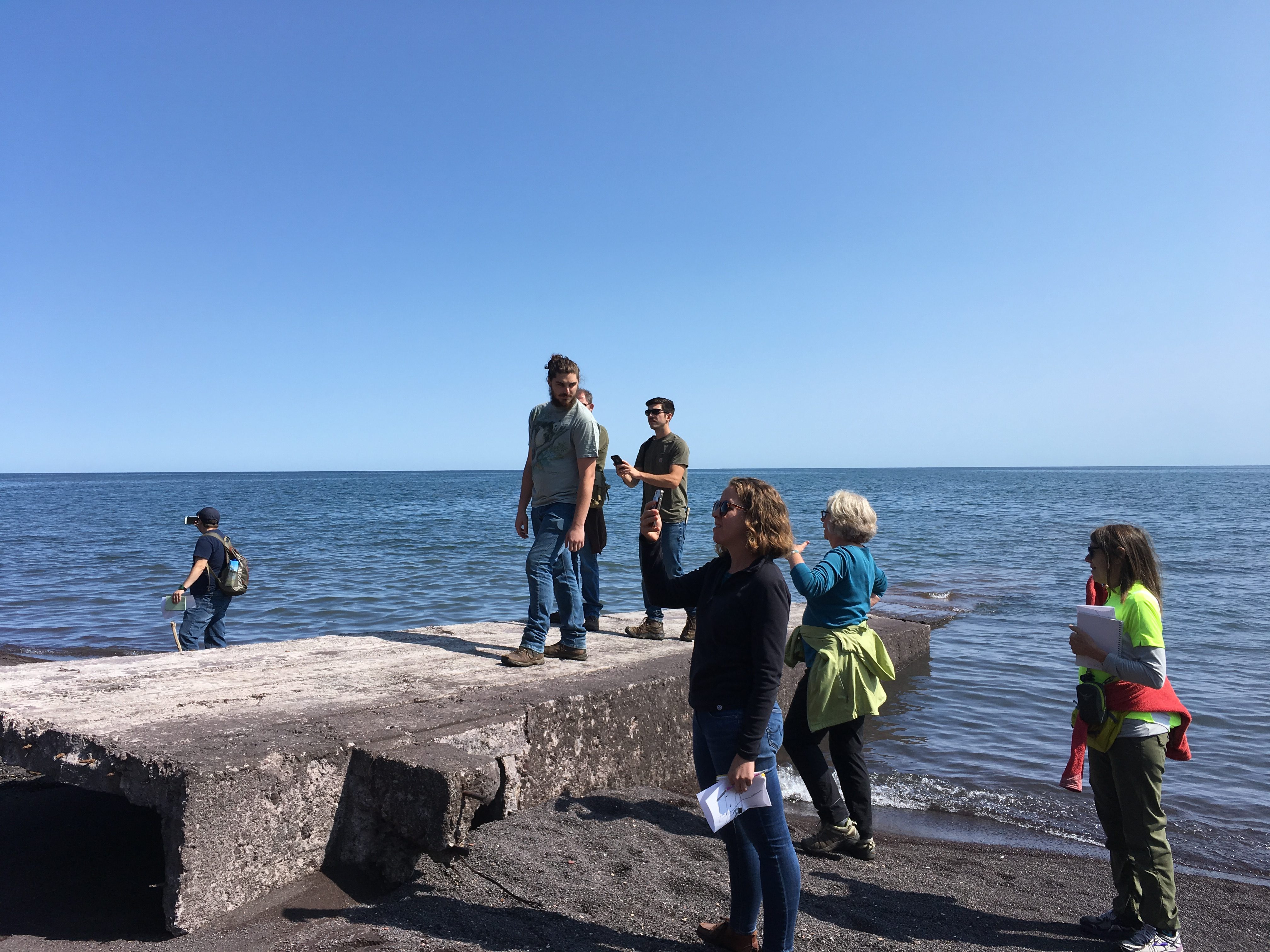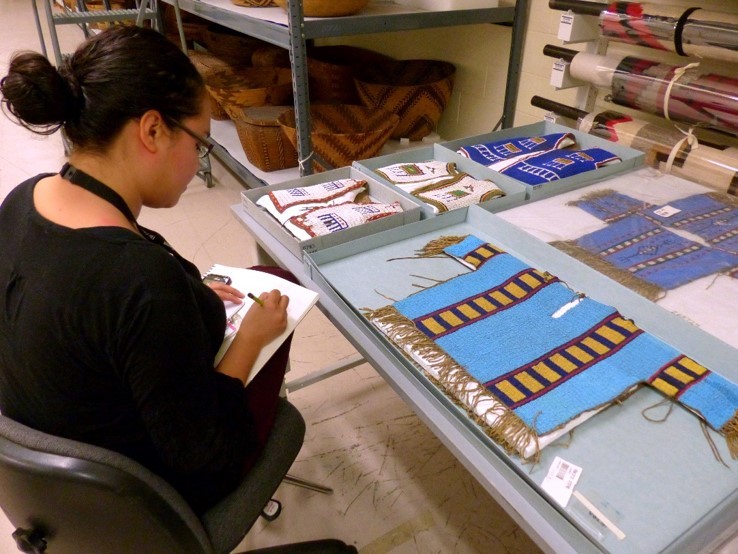A Sunny Studio Fosters Creativity
Two decades ago, with a vision of a space for artists that would elicit feelings of warmth and personality, SAR commissioned a new artist studio. The Native American artist fellowship program—then in its fourth year—needed a space more conducive to artistic creativity. The Dubin Studio was built adjacent to the Indian Arts Research Center (IARC) through the generosity of Ronald and Susan Dubin. Learn more about SAR’s two most recent contemporary Native American artist fellows and the Dubin Studio’s continued legacy of supporting artists through the open working space.
Anne Ray Intern Reflects on ATALM: An Enriching Indigenous Experience
Erin Monique Grant, SAR’s 2019 Anne Ray Intern, reports on the 12th Annual International Conference of Indigenous Archives, Libraries, and Museums hosted in Temecula, California. Grant shares her experiences and reflects on the events that included a keynote address by US poet laureate Joy Harjo (Muscogee Creek Nation).
Guidelines for Collaboration: IARC Leads National Trend in Collaborative Museum Work
The School for Advanced Research (SAR) is pleased to announce the publication of the Guidelines for Collaboration, theoretical and practical guides to building successful collaborations between Indigenous communities, museums, and other collecting institutions. The Guidelines are the product of several years of critical discourse between over sixty Native and non-Native museum professionals, cultural leaders, artists, and scholars experienced in collaborative work in various institutions in the United States, Canada, and New Zealand. Available only in limited release until now, the Guidelines are already being used by internationally recognized institutions including Chicago’s Field Museum and University of California–Los Angeles (UCLA) in collaboration with the Getty Conservation Institute.
SAR Senior Scholar Dean Falk Featured in Nature on Australopithecus Africanus: The Man-Ape of South Africa
SAR senior scholar Dean Falk has contributed a piece to the journal Nature on South African physical anthropologist and paleontologist Raymond Dart.
SAR’s eMuseum: An Interview with IARC Registrar Jennifer Day
Parts of the IARC’s extensive collection of Southwestern Native art are now accessible through SAR’s eMuseum, which Day was instrumental in creating. As we talked, she told me about the collections review process that contributed to the development of eMuseum.
Enjoying the Conversation: IARC Native Artist Fellow Jeffrey Gibson
A member of the Mississippi Band of Choctaw Indians and also of Cherokee descent, Jeffrey Gibson was SAR’s 2008 Ronald and Susan Dubin Native artist fellow and is now a MacArthur fellow, the winner of one of the “genius” grants given annually by the MacArthur Foundation.
Listen to the Introductory Presentations by SAR’s 2019 Resident Scholars, Interns, and King Native Artist Fellow
SAR Announces 2019-2020 Resident Scholars: C.J. Alvarez, Patricia Crown, Rashmi Sadana, Fátima Suárez, and Davina Two Bears.
“Indians Welcome”: Former SAR Resident Scholar Explores the Alcatraz Takeover of 1969
As a young Native scholar I’d studied Native activism and Red Power and got involved in activism; one of the names that stood out in the back of my mind, the person I’d always wanted to know more about, was Richard Oakes.
White Paper “Aging in Place: Challenges and Prospects”
“Aging in place” is a common phrase meaning that older people prefer to age (most frequently through the end of their lives) in their homes, in spaces that represent their lives, and ideally close to family and friends. This white paper is the result of a salon held at the School for Advanced Research (SAR) that took place on June 6, 2019, in Santa Fe, New Mexico, which was generously sponsored by the Ethel-Jane Westfeldt Bunting Foundation.
SAR Remembers William Y. Adams (1927–2019)
With his family and community, SAR mourns the passing of William Y. Adams, who died on August 22, 2019, in Lexington, Kentucky, at the age of ninety-two.
Elysia Poon named Indian Arts Research Center Director
The School for Advanced Research (SAR) is pleased to announce the appointment of Elysia Poon as the new director of SAR’s Indian Arts Research Center (IARC). With over a decade of experience within the organization as the IARC curator of education and nearly twenty years of museum experience, Poon has demonstrated a commitment to collaborative programming and a dedication to community-based collections care. Under her leadership, the IARC will continue to advance national conversations around how collecting institutions and Native American communities can work together to foster cultural heritage and promote contemporary art practices.
A Pivot from Painting to Lingerie Design
Printmaker and painter Jordan Ann Craig has turned to a new outlet for her creativity: lingerie. Her new company, Shy Natives, founded with her sister Madison Craig, has such compelling, fresh designs, it was recently featured in Vogueworld, a daily online news site of Vogue Magazine.
Understanding the U.S. Immigration Detention System – An Anthropologist’s Perspective
After Deborah Boehm finished her book Returned: Going and Coming in an Age of Deportation, which she partially wrote as an SAR Research Associate in 2013, she knew she needed to do more. During her research, she had formed deep relationships with immigrant families impacted by deportation. “Many of those I had interviewed had been also been detained, and their stories were so harrowing,” she says. “Their lives had been unraveled by state action.”
Pueblo Activists and Allies against the Bursum Bill of 1921
In 1921 New Mexico senator Holm Bursum introduced a bill into Congress that would have allowed non-Native people to claim Pueblo Indian lands if they could prove ten years of residency. The Indigenous governors of the nineteen pueblos worked with John Collier, Indian rights advocate and FDR’s commissioner of Indian affairs, to send representatives to Congress who would voice their opposition to the Bursum Bill of 1921.
2019-2020 Creative Thought Forum Series Addresses the Future of Work
The School for Advanced Research is pleased to announce the third annual Creative Thought Forum series. Across lectures and conversation-style salons, SAR and community partners invite our members and the public to explore our understanding of where humanity is going in a new age of technological and cultural shifts under the thematic umbrella of “The Future of Work.”
John Nieto-Phillips and Thomas R. Conner Join SAR Board of Directors
The School for Advanced Research in Santa Fe, New Mexico, is pleased to welcome two new members to its board of directors: John Nieto-Phillips, Vice Provost for Diversity and Inclusion and Associate Professor of History and Latino Studies at Indiana University, Bloomington, and Thomas R. Conner, former trial attorney and founder of TIRR Foundation/Mission Connect, a nonprofit dedicated to improving the lives of those living with paralysis or traumatic brain injuries.
Redefining Ancient Maya Culture Through the Study of the 99 Percent
SAR board member and eminent archaeologist, Jerry Sabloff has devoted considerable effort to the study of settlement patterns in Mexico and Central America—the when, where and how non-elite Maya people lived and worked. Sabloff discusses his discoveries in a Q&A interview in the 2019 issue of Knowable Magazine and presents on the topic in this fall’s SAR In-Depth course.
Touring “Down Under” to Talk Hobbits, Einstein, and the Evolution of Language
At the heart of her research, SAR senior scholar Dean Falk asks, “What can fossils, babies, and Einstein tell us about the way our brains have evolved?” Falk addressed this question and more during a tour of lectures and interviews across western Australia this summer, where, on the Australian Broadcasting Corporation (ABC) Radio program “Late Night Live”, she touches upon evolution and language, the uniqueness of Einstein’s brain, and “hobbits”, or the newly discovered (and short) human species, Homo floresiensis.
Guide to IARC Native Artist Fellows at the 2019 Santa Fe Indian Market
Every August, Santa Fe fills with people passionate about Native American art. Visitors and locals filter downtown to peruse the booths of Indian Market and to strike up conversations with the artists. Here is your guide to IARC's former Native American...
SAR Curated. The Century Dictionary Case
Although we now use the Dobkin Boardroom for lectures, meetings, and social gatherings, it still includes the original “choir loft” at one end, and this loft hides a curiosity.
Guidelines in Action: Museum of Indian Arts and Culture and Jicarilla Apache Baskets
Sophie Hunter, the former Samuel H. Kress fellow with the Museums of New Mexico conservation unit, shares how the IARC Guidelines for Collaboration helped develop a conservation plan for a large collection of Jicarilla Apache pitch-coated baskets at the Museum of Indian Arts and Culture in Santa Fe, New Mexico.
Ian Kuali’i on Ephemeral Site-Specific Installations and Hand-Cut Paper Works
2019 Ronald and Susan Dubin Native Artist Fellow, Ian Kuali’i takes the stage on August 8, 2019, in SAR’s Eric S. Dobkin Boardroom to share about his fellowship experience. Through hand-cut paper works and ephemeral Land Art/Earth Works installations, Kuali’i bridges contemporary and traditional techniques and designs while addressing themes related to his own history and identity, as well as what he expresses as “intertwined system of bio-cultural landscape and modernization”
A Part of the Flow: IARC Native Artist Fellow Mateo Romero
Mateo Romero is interested in motion—bodies and ideas moving through space, history, ceremony, art. Romero describes his work as juxtaposing “timeless, archaic elements of Pueblo culture” with “contemporary abstract expressionist palette knife and brush work.” In 2002 he came to SAR’s Indian Arts Research Center (IARC) as the Ronald and Susan Dubin Native artist fellow.
Exploring the Cultural and Environmental History of Mining in Michigan and New Mexico
SAR senior scholar, Carol MacLennan, has focused her research on mining policy in the US and is currently completing her manuscript, Laid to Waste: Lessons from 100 Years of Mining, which explores the ongoing cultural and environmental impact of copper mining in New Mexico and Michigan.
Guidelines in Action: Chicago’s Field Museum Improves Community Visits
See how the internationally-recognized Field Museum is implementing the Guidelines for Collaboration in their work. Guest post by Jamie Kelly, Head of Anthropology Collections & Collections Manager at the Field Museum’s Gantz Family Collections Center and Jamie Lewis, Anthropology Collections Manager at the Field Museum’s Gantz Family Collections Center.
SAR Curated. The Florentine Codex
To search the archives for information about SAR’s groundbreaking English translation of Bernardino de Sahagún’s Florentine Codex, co-published with University of Utah Press beginning in the 1950s, is to experience time in the form of paper.
Sharing Knowledge and Collaborative Curation: Native Women Artists Featured in New MIA Exhibit
“It may ruffle feathers, but diversity means there’s a different way of doing things. If you want buy-in from the Native communities, you have to listen to them.” —Teri Greeves, SAR’s 2003 Eric and Barbara Dobkin Native artist fellow, quoted in a recent New York Times article exploring the current Minneapolis Institute of Art exhibit, Hearts of Our People: Native Women Artists.
Unlocking Clues to Life in the Middle San Juan Pueblos
Ruined great houses, corn kernels and bones—these are just some of the archeological fragments that have offered researchers new insights into how Middle San Juan Puebloan peoples lived in the 12th and 13th centuries. Featured earlier this year in the Santa Fe New Mexican’s Pasatiempo, the book Aztec, Salmon, and the Puebloan Heartland of the Middle San Juan covers these topics and more as eleven contributing writers examine new evidence that helps shed light on the settlements.
SAR Curated. The Rathmullan and Kandahar Kennels
Elizabeth and Martha White established Rathmullan Kennels in 1930, when they decided to start raising Irish wolfhounds and bought a breeding pair: Gelert and Edain of Ambleside.
Bringing Native American Voices into Exhibition Development
2016-2017 Anne Ray intern, Nina Sanders, shares her reflections on an ongoing collaboration with the Field Museum in Chicago.

